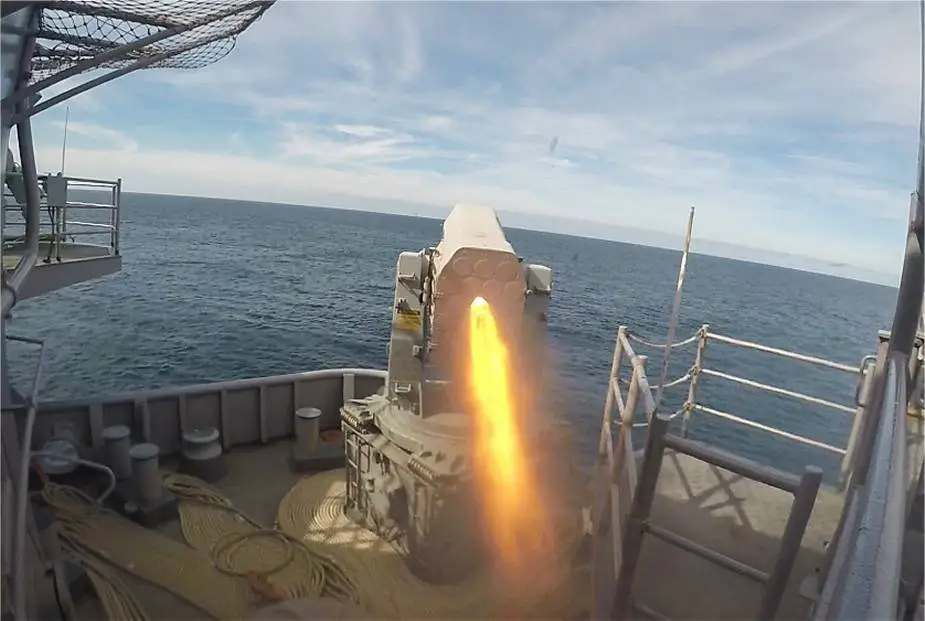Breaking news
Raytheon to produce US RAM Block 2B Sea-Based Air Defense System for Egypt.
According to a contract released by the U.S. Department of Defense on May 28, 2021, Raytheon Missiles and Defense, Tucson, Arizona, is awarded a $112,690,243 firm-fixed-price modification to a previously awarded contract to perform Navy transition to production efforts for RAM Block 2B Sea-Based Air Defense System and exercise options for fiscal 2021 Foreign Military Sales (FMS) to Egypt for the Rolling Airframe Missile (RAM) Block 2 guided-missile round pack (GMRP).
Follow Navy Recognition on Google News at this link
 The U.S. Navy multipurpose amphibious assault ship USS Bataan (LHD 5) conducts a live-fire exercise with the ship's RIM 116 Rolling Airframe Missile Weapons System. (Picture source U.S.DoD)
The U.S. Navy multipurpose amphibious assault ship USS Bataan (LHD 5) conducts a live-fire exercise with the ship's RIM 116 Rolling Airframe Missile Weapons System. (Picture source U.S.DoD)
The Rolling Airframe Missile (RAM) is a small, lightweight, infrared homing surface-to-air missile. It is a fire-and-forget Close-In Weapon System (CIWS) for ship self-defense against Anti Ship Missiles (ASM), helicopters, aircraft, and surface targets. The RAM was designed to engage the most challenging threats and is the only ASM defense system capable of effectively coping with multiple and high-density raids, even in littoral scenarios.
The RAM system consists of the missile RIM-116 and the Guided Missile Launching System (GMLS) MK-49. The GMLS holds 21 RAM Block 1 or RAM Block 2 RIM-116 missiles and is integrated with the Command & Control system of the naval platform. The RAM is being in production since 1989 is operational on approximately 100 ships of the navies of Germany, the USA, Greece, South Korea, UAE, Egypt, and Turkey. In total, more than 200 weapon systems and 4500 missiles have been produced and delivered so far.
In May 2007, the US Navy awarded Raytheon Missile Systems a $105 million development contract for the RAM System. In October 2012, the RAM Block 2 completed its third guided test vehicle flight, firing two missiles in a salvo and directly hitting the target, to verify the system's command and control capabilities. The Block 2 RAM was delivered to the U.S. Navy in August 2014, with 502 missiles to be acquired from 2015 to 2019.
The RAM system MK-31 consists of the missile RIM-116 and the Guided Missile Launching System (GMLS) MK-49. The GMLS holds 21 RAM Block 1 or RAM Block 2 RIM-116 missiles and is integrated with the Command & Control system of the naval platform. The missile has an operational range of 6.2 miles (10 km).
The RAM Block 2 is a kinematic and radio frequency (RF) receiver upgrade of the RAM Block 1A missile. A larger, more powerful rocket motor and advanced control section provide the Block 2 missile with the capability to defeat high-maneuver threats. The enhanced RF receiver allows detection of anti-ship missiles that employ a low probability of intercept radars.


























